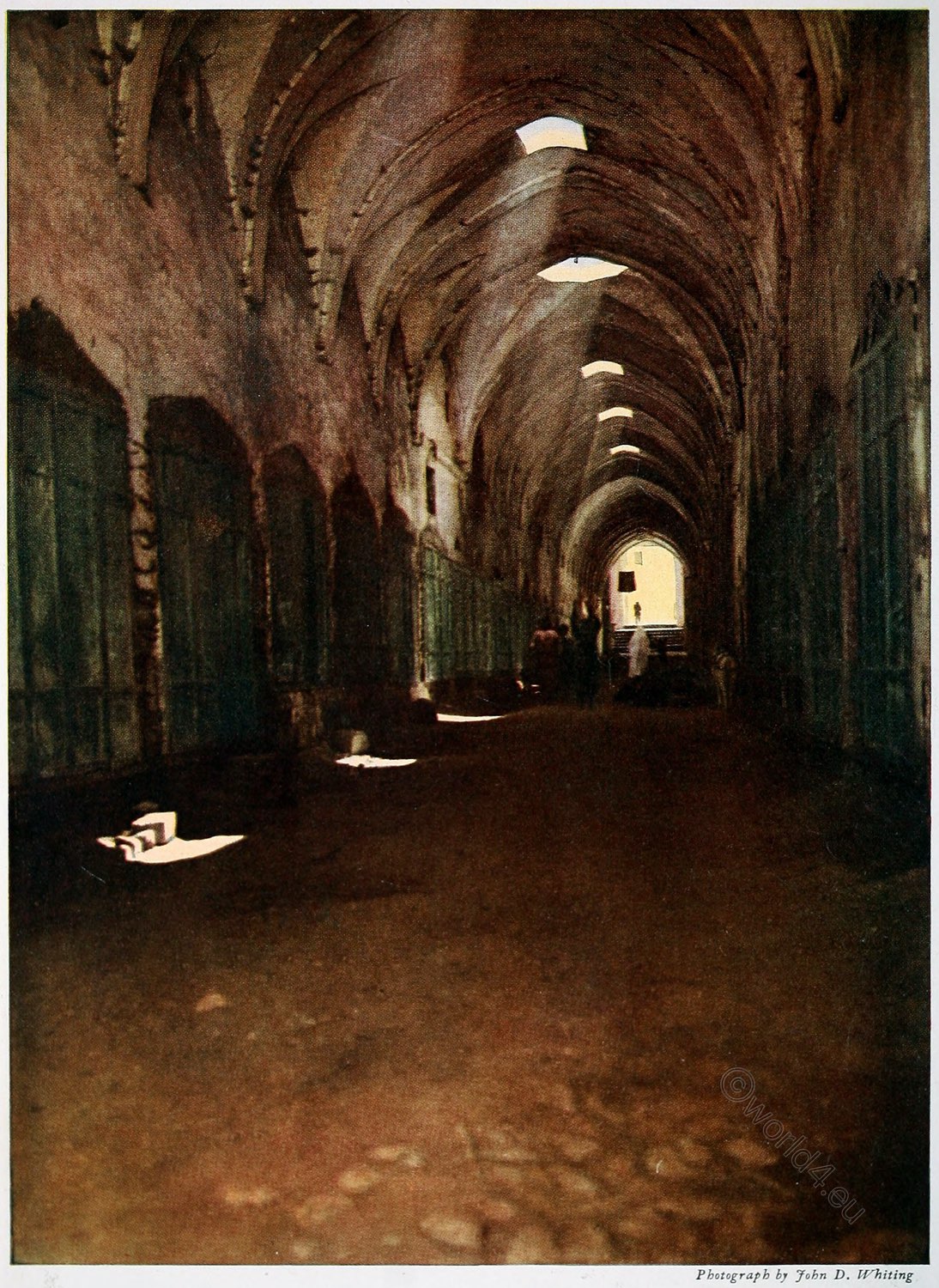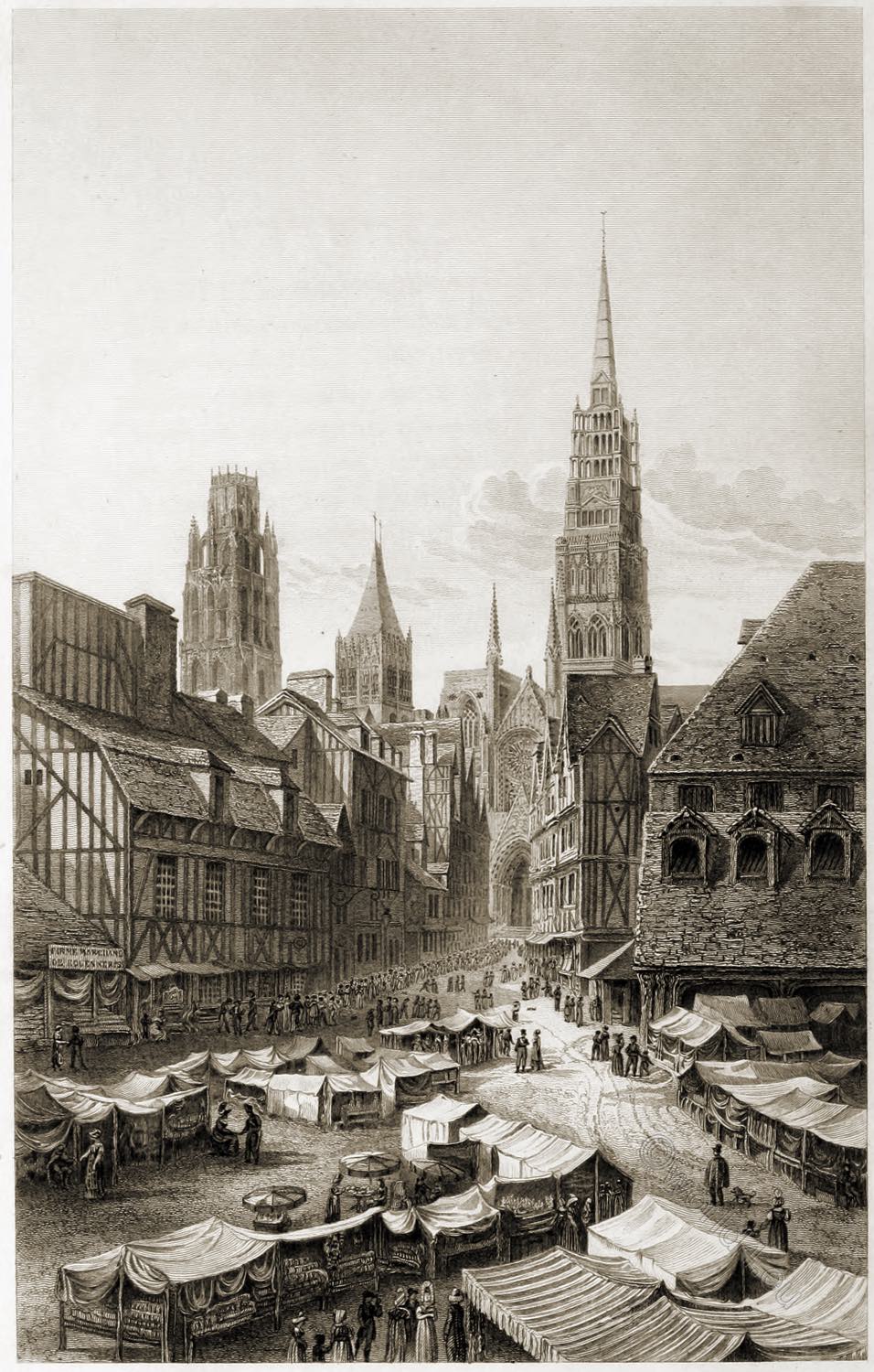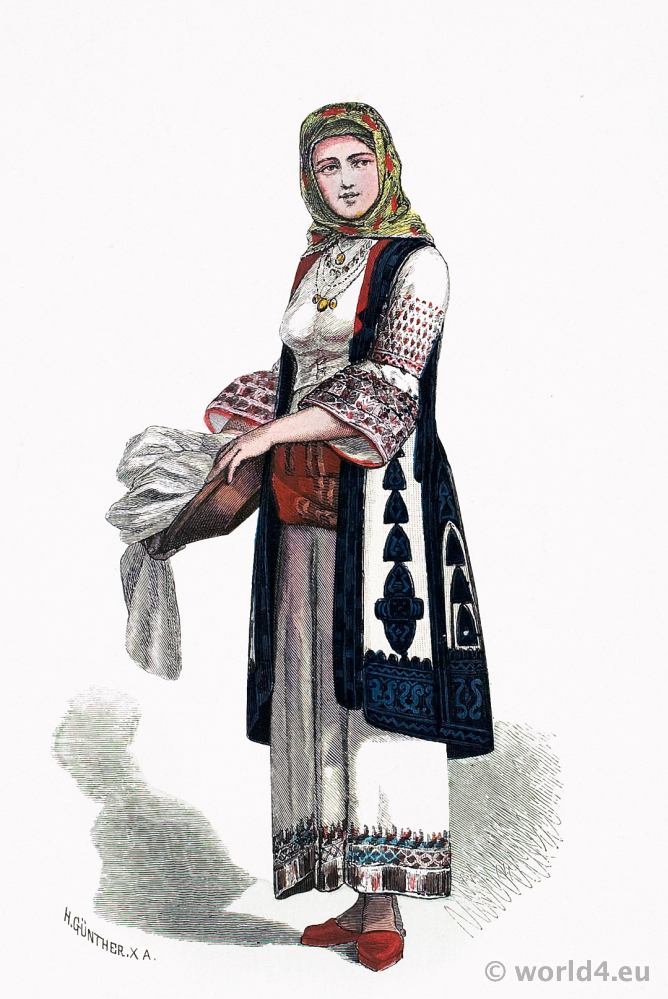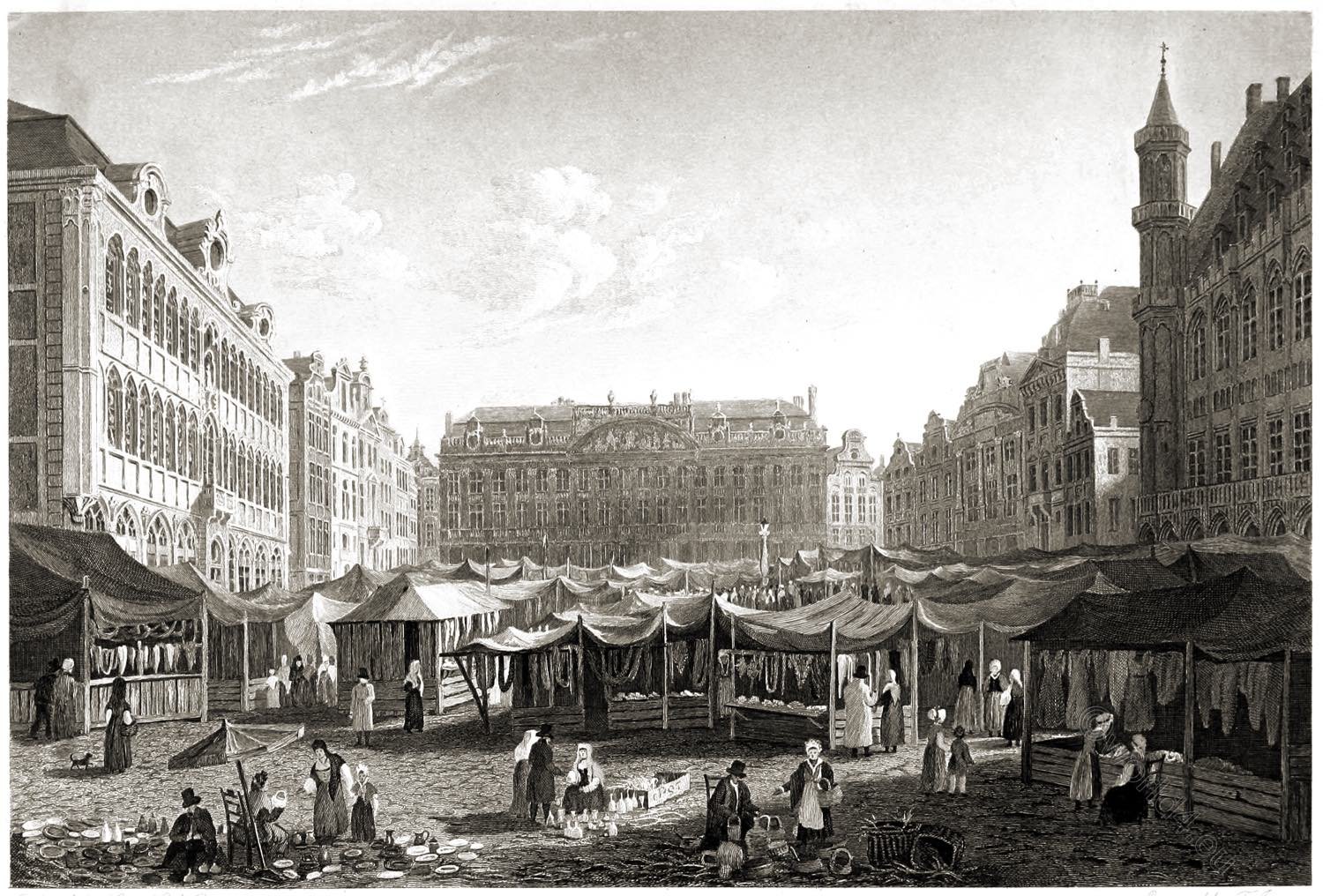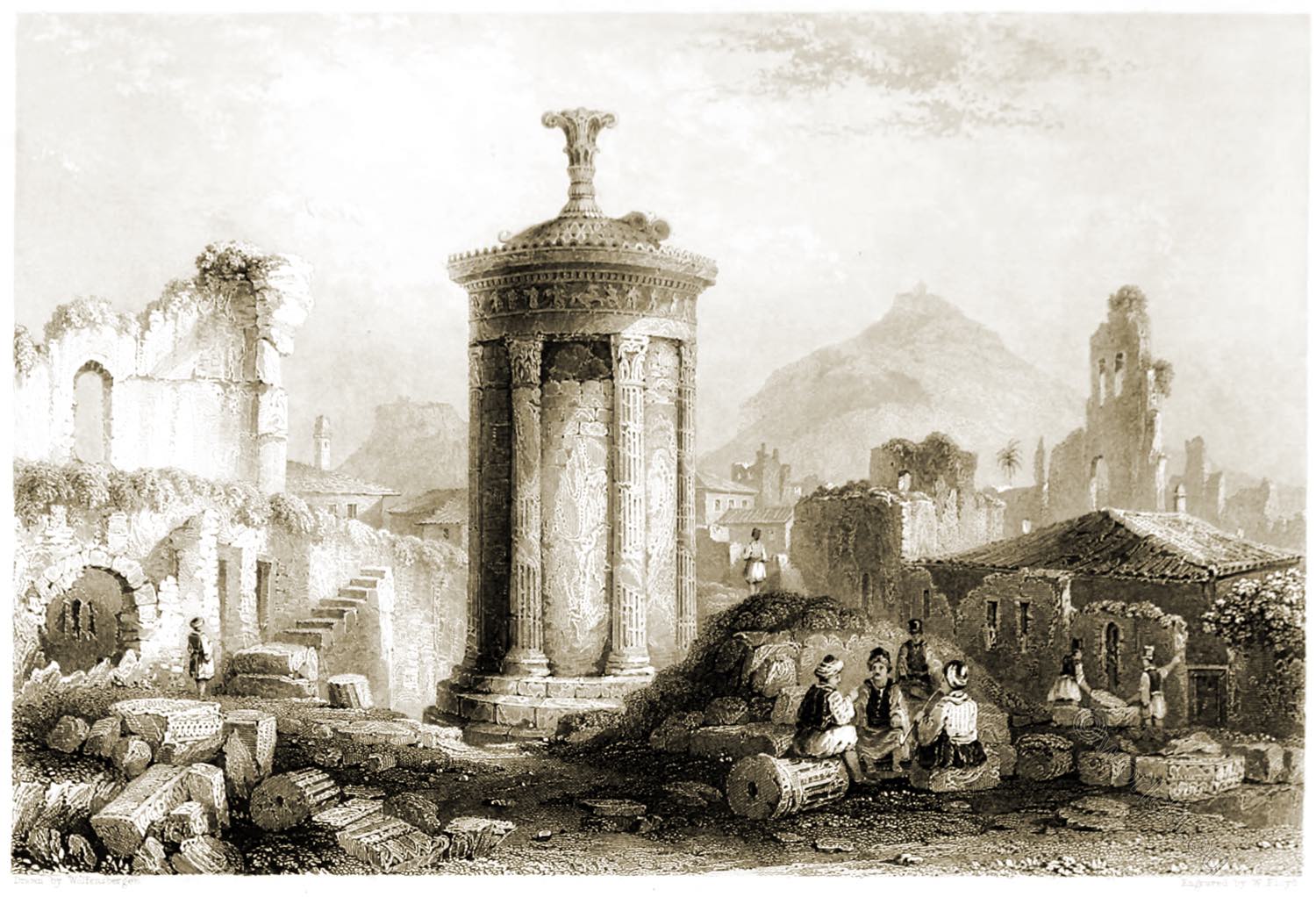The Bazar of Athens.
THE busy scene, which is represented in this view, is the weekly market which takes place in the bazar, or market-place of Athens; which, at that time, becomes the resort not only of the inhabitants of the town, but also of the villagers who are dispersed over the adjacent territory. Greeks, Turks, and Albanians are then seen mingled together; and while the variegated diversity of their costumes gratifies the eye of the beholder, the irreconcilable dissonance of their manners supplies ample materials for reflective remark and philosophical contemplation.
The nearer figures in this view are portraits. The black on the right hand is on emancipated slave dressed in velvet and gold, which is a finery that they particularly affect. The next figure is the keeper of the adjoining coffee-house, who is taking some coffee to the Disdar, or governor of the castle, who is sitting by the steps, habited in scarlet, with a Turkish Agha on his right hand. The Greek standing on the mat is the Voivode, or governor of the island of Submits, and son of the late English agent, Speridion Logotheti.
The person meeting him is a Greek Baratario, thus denominated from his turban, which serves as a distinctive badge for the agent of a foreign nation. It is also worn by Greek physicians. Turkish women compose the distant group of three females, with long white robes and black veils. The other females dispersed throughout the view are Albanian Christians. The Turk habited in the sacred color, green, is a pilgrim who has performed the journey to Mecca.
The distant part of the view exhibits the northern side of the acropolis, within the walls of which, on the left of the nearer minaret, are distinguished the remains of the Erechtheion and of the Parthenon. On the right hand of the minaret the cave of Pan is observed, with the high Venetian tower rising above it near the Propyliæa.
Source: Views in Greece by Edward Dodwell. London, 1821.
Continuing
Discover more from World4 Costume Culture History
Subscribe to get the latest posts sent to your email.


